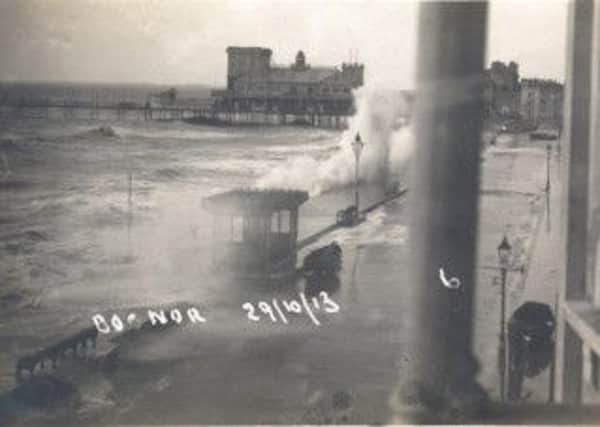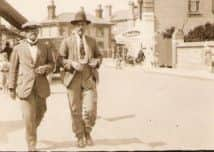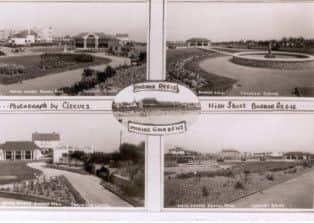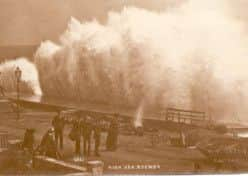Nostalgia: The changing image of photography


Photography as we understand it in this country today can be traced back to the earliest-surviving photograph which had a paper negative, dated 1835.
The photograph is of a leaded window in a Wiltshire building, which was the home of William Henry Fox Talbot. Eventually there were lantern slides, which were the forerunner of the modern slide, which of course I use today in all my talks. However I will not attempt to delve too much into the history of photography here.
Advertisement
Hide AdAdvertisement
Hide AdThe Victorians had numerous comments on these ‘pieces of card with pictures’ as one statement from the Bognor Observer of December 11, 1895 shows: “Photography affords a very nice pastime to a good many people, but the multiplication of instantaneous cameras has, it is well said, become a perfect nuisance to the general public. You cannot multiply copies of a man’s photograph without his consent. Why, asks a correspondence, should it be lawful to take a snapshot of him without his consent?” This long report concluded that ‘there are many cases of ladies who are positively afraid to emerge from the seaside machines or tent in which they don their bathing dresses on account of this nuisance’. How times have changed! Before long people were of course clamouring to buy photographs and the new postcards – which were definitely a multiplication of a man’s image.


If you look carefully at the early stage-managed postcard views, the people’s smiling faces suggest they were not really as camera shy as some of the reports of the time suggested. Mr WP Marsh, who had his studio facing the pier, advertised that he carried out ‘instantaneous photography’ as it was then known.
Luckily for us he was also was very interested in his locality and was a prolific producer and publisher of views of the neighbourhood, thankfully for the local historian. One of his major claims to fame was that his photographs of ‘high seas and breaking waves’ were shown in many major exhibitions around the country.
In the 1800s, of course, this new idea of photography was to remain a mystery for some, and was considered to be the province of the rich and famous. As time progressed, it became an obsession for some individuals and for others it was a method by which they could make money. We are lucky that in Bognor there were a number of photographers, who took pictures for postcards, for use in books, magazines and other saleable items.
Advertisement
Hide AdAdvertisement
Hide AdSome of the notable photographers include ‘Cleeves’ which was situated on the Esplanade and in the High Street, where today we have the National Westminster Bank. This chemist and photographer would take a variety of pictures of the town and then produce his own ‘home-grown’ postcards. Another was King and Wilson who were renowned for taking a picture one day and publishing it the next day with the actual date written on the front. These would then be on sale for the visitors to send home to their family – giving a truly instant image of the town.


For many of the town’s visitors, the photograph was the major souvenir that reminded them of their holiday and because of thi, over the years there have been street photographers, who would stroll among the crowds, encouraging them to have a picture taken, perhaps with a monkey or parrot on their shoulder. Today this still occurs; only the animal has now been replaced with a person in an animal outfit, due to the apparent lack of care given by a minority to the animals.
Photograph albums are a great source of interest and information. I have acquired one clearly dated 1904 that shows various pictures of the town including a view of the railway station platform – I am not sure of the significance of this. As the camera became more accessible, people would take them on holiday and build up their own collections, including views of the family on the seafront, especially in front of their own bathing hut. Here it is interesting to note the fashions in comparision to those of today.
Organisations or companies have used pictures as part of their advertising; an example of this is Butlin’s which, for many years, produced keyrings for holidaymakers to purchase and take home; for others pictures can form an integral part of the memories of a particular event and the most notable colourful event for Bognor Regis was the Clown Convention. The pictures taken at this event, by thousands of both professional and amateur photographers, have appeared worldwide and adorned many magazines. In more recent years the fridge magnet has become one of the major souvenirs to take home, both as a reminder of their visit or as a present ‘for friends’.
Advertisement
Hide AdAdvertisement
Hide AdDuring the early 1900s, pictures and images were used in a variety of ways. Some of the images were placed on to cups, plates and a variety of shaped china when it was popular to take home a piece of china, to join the growing hobby of collecting. During the later part of 1900, these images were improved and then placed on to cups, mugs and plates as part of a town’s advertising medium.


As technology has progressed, images of people and places have been used more readily in a variety of styles. With the advent of the computer and digital photography, it is extremely easy for an image to be transferred. This includes the T-shirt, a puzzle, and even your own special mousemat to use with your computer.
All this, of course, is a far cry from the instantaneous photographs the Victorians complained about. But luckily people enjoyed the hobby and as it became easier and cheaper,more and more people became involved.
Fortunately for the local historian, many images have been captured for us to enjoy today. One word of caution – do we all write the date on our photographs? – I know I don’t – so that in the future people will be asking, ‘when was that picture of the Regis Centre taken?’
Advertisement
Hide AdAdvertisement
Hide AdToday we have the digital photographer, who with his computer, at home, can produce, crop and change pictures to individual requirements. These are truly the instantaneous photograph, as once taken they can be loaded on to the computer and sent worldwide in seconds. Another word of caution because of this new technology – we will not be finding ‘the box of old photos’ to look through in the future, especially important for family historians.